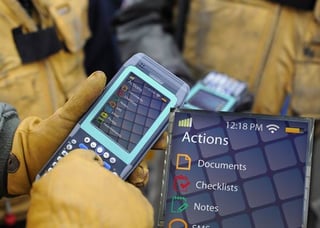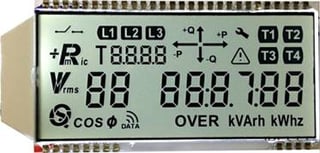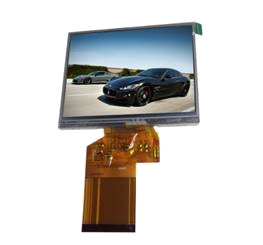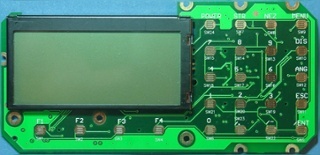It may have been years since you last switched to a new LCD display supplier. And chances are, that original vetting process may not have been very thorough if done at all, which may be why this is why you're re-evaluating today. Asking the right questions during this process clarifies what you need for a successful partnership with your display provider.
Questions like; What do you need to know about them? What do they need to know about you? Do they have the capabilities needed to address your display needs?, can help you adequately vet your new LCD supplier.Asking the Right Questions
Much of the vetting process comes down to asking the right questions about your needs. Knowing exactly what display needs should be accommodated by the new LCD display manufacturer will inform you as to what capabilities they should possess.
What industry are you in? Undoubtedly, the industry you operate in will play a part in shaping the context of your display needs. For example, the aerospace and military industries have specific quality standards as well as geographic manufacturing restrictions. Similar distinctions would be present in industries such as automotive and industrial markets, whereas the consumer market tends to be too price sensitive to employ these same rigid standards. Does your potential supplier manufacture displays for the same industry you operate in?

What technology do you require? This question offers another important point for consideration. Monochrome and color TFT displays offer significantly different tooling costs and minimum order quantities. And you may need OLED or another technology; however, knowing the answer, even if you’re unsure, will help you determine whether the LCD display manufacturer could be a good fit.


Are there special requirements that force your display to be custom? Reasons for this could be as diverse as mechanical or motion-based constraints or temperature / environmental concerns. There are also optical considerations, such as contrast, brightness, response time, and viewing angles, as well as durability and interface requirements. You may also have custom features, such as buttons or customized icons on the glass or touch panel.

Are you designing a new product requiring an LCD display, or trying to match an existing LCD display you’re already using? These are two very different needs, and the new LCD supplier may
not be able to accommodate both. Does the supplier have a standard off the shelf product that fits your needs? If not, are they willing to support custom or semi-customizations to simplify the integration of this new component into your product? How willing are they to custom match your existing display, and do they have experience with this process?
What are your typical annual display volumes? There’s a significant difference between 2,000 per year and 200,000 per year; not only in numbers, but in the ability for an LCD display supplier to meet certain volume demands effectively and efficiently.
General display volume classifications in units are:
- Low: less than 2,000 per year
- Mid: 2,000 to 200,000
- High: 200,000+ per year
What is your product lifecycle? Similar to the previous question, be aware of lifecycle classifications: For longer durations, you will need to make sure that your supplier has component obsolescence strategies in place they're willing to accommodate re-design efforts to keep your LCD configuration in production for the duration of the end products’ lifecycle.
- Short: 2 years
- Medium: 3 to 6 years
- Long: 7+ years
Can your system handle any LCD display changes? Essentially, how easily can the display become obsolete? Are you ready for the changes? How much would this impact your business if the display supplier couldn’t keep up with the changes?
Recalling the industry distinctions, the military, aerospace, and medical industries typically have many qualifications and are so cost and time intensive that you need to keep additional stock and be able to make changes to avoid issues.
Keep in mind that your answer to this question will mean:
- Yes: able to regularly adapt to any modifications
- Some: able to handle minor changes as they arise, though it would be somewhat costly and require some requalification
- No: redesign and requalification are cost-prohibitive
Depending on the effects of display changes, the supplier will need to have the appropriate configuration control and obsolescence mitigation to insure that your supply chain is uninterrupted throughout the life of the end product.
Where are you manufacturing your product? Manufacturing can occur nearly anywhere in the world, and your logistics needs may be best suited for a particular location:
- FOB Asia: only ideal when you are manufacturing your product overseas
- FOB domestic: the most standard location
- FOB customer: the cheapest location
For example, if you are manufacturing in Asia, an overseas manufacturing facility like an FOB Hong Kong point would be suitable. In contrast, manufacturing in the United States would warrant a domestic FOB point.
Do you have additional logistics requirements? Whether you require JIT ordering, buffer stock, or less than lead-time ordering, will determine what the LCD display manufacturer needs to use to ensure a seamless integration.
Knowing What to Look For is Key
Make sure to create a list of your attributes so you are able to compare them against your prospective LCD display supplier and supply chain.
Compare multiple display suppliers to see how well each one matches your list. It's not always about cost. If the display supplier doesn’t work within your core competencies, then you will most likely find much higher ancillary costs and a higher overall system level cost by partnering with the wrong supplier.
If you consider the questions we’ve outlined above, you’ll be well equipped to effectively vet your potential LCD display supplier.
Looking for a new LCD display supplier that can address your unique display needs? Contact us for more information or if you have any questions.






